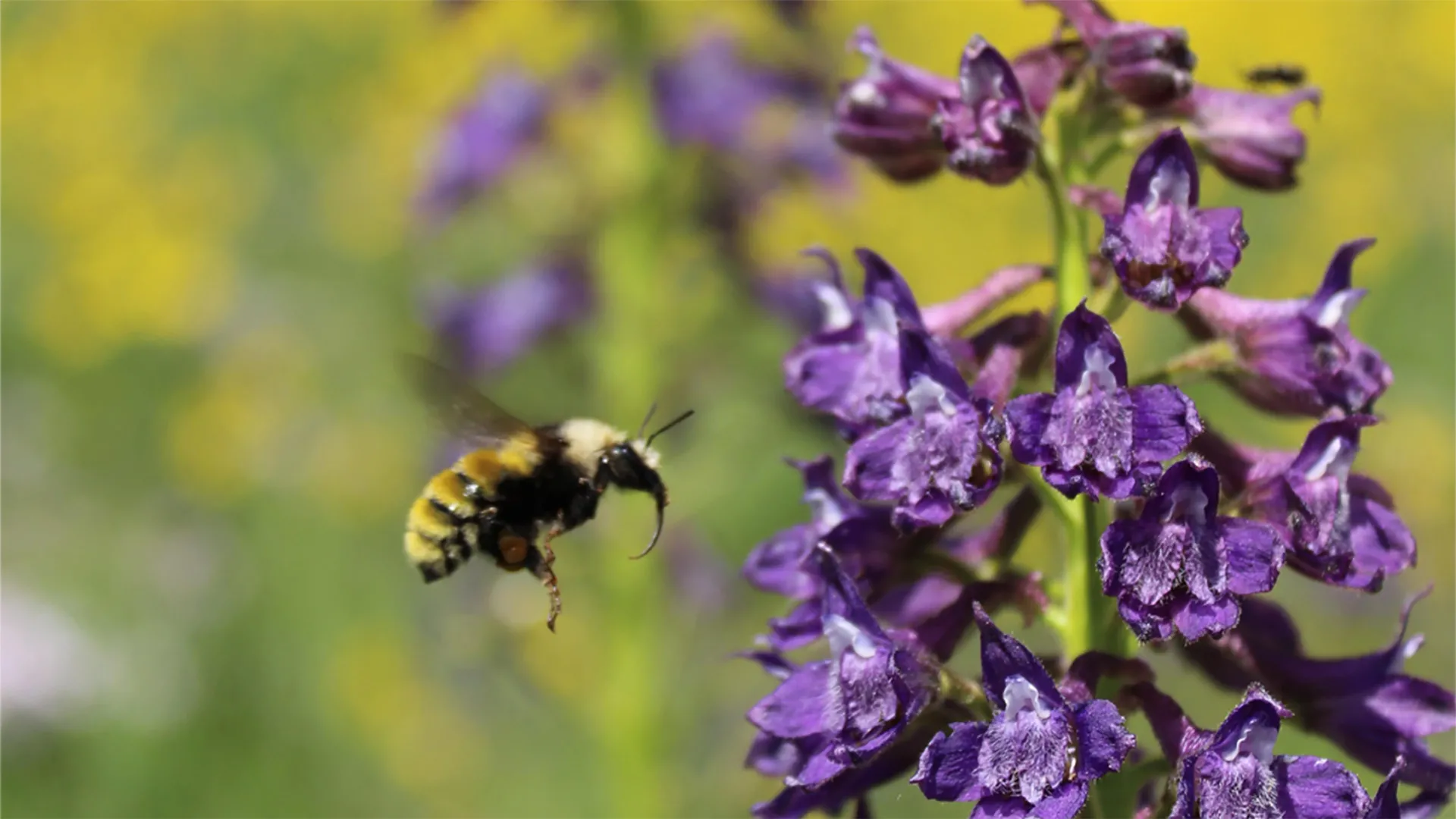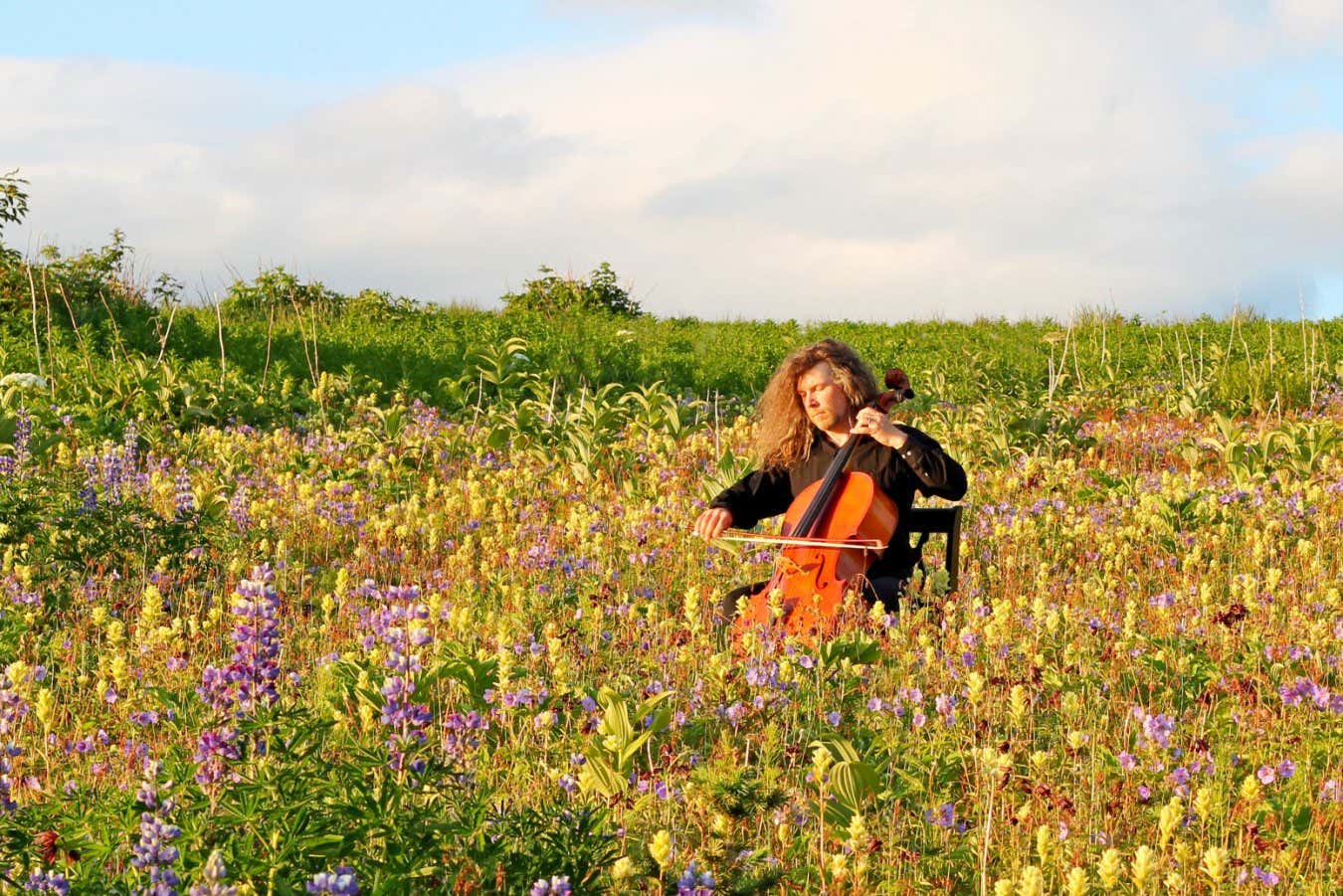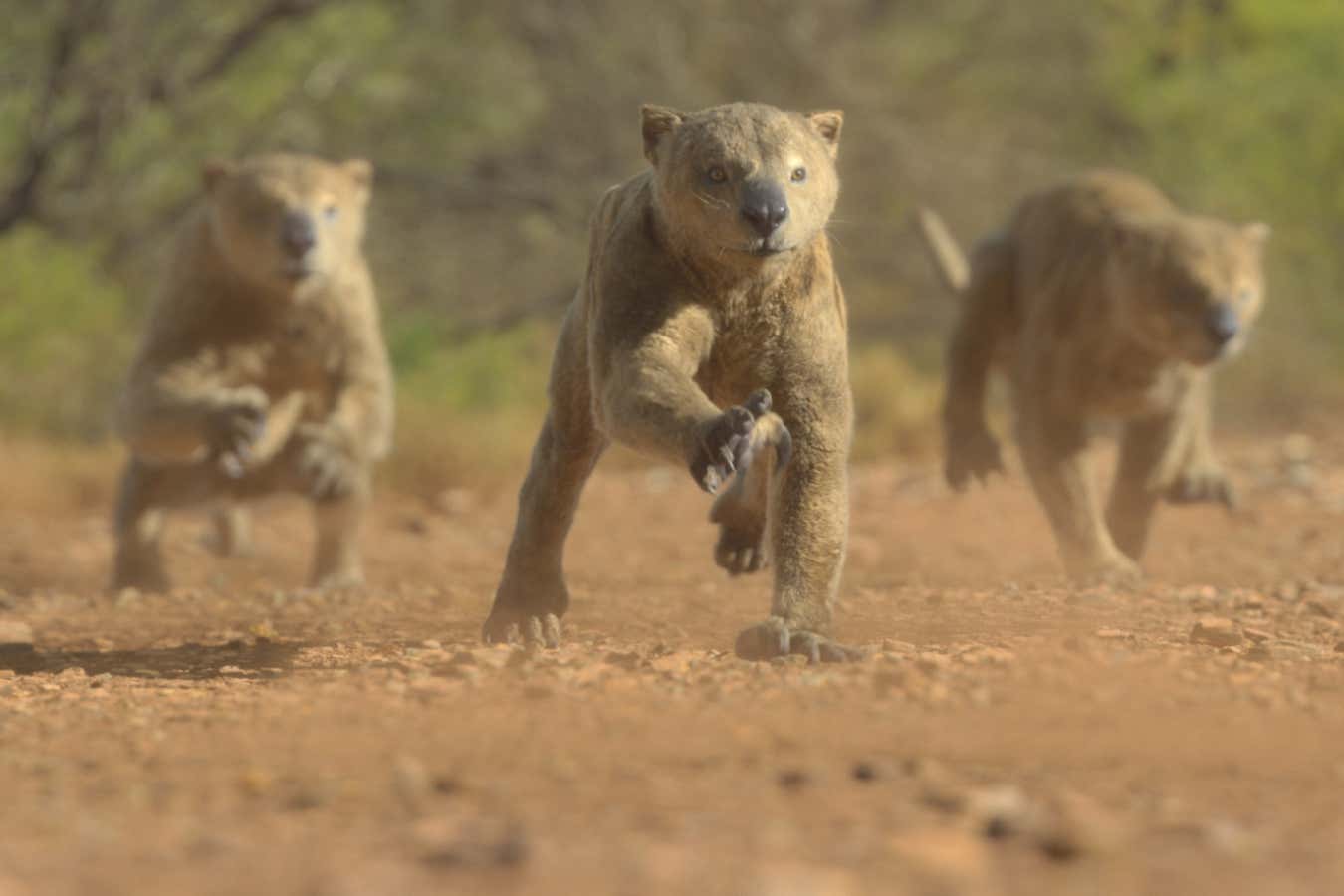Move over gym rats. Bumble bees are now the true masters of macros.
In the first long-term, community-level field study of wild bumble bee nutrition, a team of ecologists led by Northwestern University and the Chicago Botanic Garden discovered that wild bees aren’t just flitting from flower to flower, collecting pollen at random. Instead, they are strategically targeting flowers that enable them to carefully balance their protein, fat and carbs.
Focusing on pollen consumption, the study revealed that coexisting bee species occupy two distinct nutrient niches. Larger bodied bees with longer tongues prefer pollen that’s high in protein but lower in sugars and fats. Bees with shorter tongues, however, tend to gather pollen that’s richer in carbs and fats. The scientists also found individual bees adjust their diets as their colonies grow and develop, reflecting changing nutritional needs throughout the season.
By dividing up nutritional resources, wild bumble bees can avoid competition, thrive together and keep their colonies buzzing strong all season long.
The study was published on Aug. 26 in the Proceedings of the Royal Society B: Biological Sciences.
“Despite the general importance of wild pollinators, especially bees, we know very little about their nutritional needs,” said Northwestern’s Paul CaraDonna, the study’s senior author. “Given widespread pollinator declines that have been observed around the globe, this knowledge gap is surprising and concerning. Our research provides some of the best information yet on the availability of nutritional resources found in wildflowers and how pollinators use these resources. We can incorporate this work into our thinking about garden design, so we can select the right flowers that best support the nutritional needs of wild pollinators.”
An expert on plant-pollinator interactions, CaraDonna is an adjunct associate professor in the Program in Plant Biology and Conservation, a partnership between Northwestern’s Weinberg College of Arts and Sciences and the Chicago Botanic Garden. Justin Bain, a recent Ph.D. graduate from CaraDonna’s lab group, is the study’s first author. This work was a part of Bain’s dissertation.
In the dark about diet
In the wild, bumble bees mainly consume two floral-based foods: sweet, syrupy nectar and fat- and protein-packed pollen. While adult bees sip nectar for a quick burst of energy, they also collect pollen for their babies, or larvae, to help them grow. Worker bees gather pollen from various flowers, pack it into special “baskets” on their hind legs and ferry it home to feed their young.
“We know that bees forage exclusively from flowers for pollen and nectar,” CaraDonna said. “Beyond that, we are in the dark. That is like humans shopping at a grocery store and assuming that all food items in the entire store have similar nutritional value. Clearly, that is a bad assumption.”
While other researchers have conducted short-term, lab-based studies on nutrition for single species of bees, the Northwestern and Chicago Botanic Garden team aimed to develop a more comprehensive nutritional map for how things play out in the wild. Instead of focusing on one bee species in isolation, the team examined a collection of bumble bee species in the wild to determine how species divide nutritional resources.
From steak to salad
To do this, the researchers observed eight different species of wild bumble bees at a field site in the Colorado Rockies. Across the span of eight years, the team meticulously tracked which flowers each bee species visited for pollen and then collected pollen samples from these plant species to understand their nutrient content.
The team took the pollen samples back into the lab, where they measured the macronutrient content of each pollen sample, specifically calculating the concentrations of protein, fat and carbohydrates. The full dataset included nutritional profiles for 35 different plant species.
“All pollen contains protein, fats and carbs,” Bain said. “But each type of pollen has a different mixture of these macronutrients. Some are very high protein like a steak. Others are more like a salad. So, the nutritional profiles are very, very different.”
Who eats what and why
After determining the macros for each pollen sample, the researchers compared each bee species’ diet with their physical traits (like tongue length) and with seasonal shifts in flower availability. Immediately, clear patterns emerged.
Not only did pollen’s nutrient content vary substantially among plants, but it also changed throughout the season. Spring flowers, for example, have more protein-rich pollen, while late-summer flowers are richer in fats and carbs. Interestingly, this shift in protein aligned with bees’ nutritional preferences across the season.
“Queen bees emerge in the spring to establish their colonies,” Bain said. “They forage when the snow first melts, collecting protein-rich pollen for themselves and their first brood. Later in the summer, worker bees take over foraging, and half of the species shifted toward pollen with less protein and more fats. Seeing these clear transitions between queens and workers was especially striking, and it highlighted how differently species meet their nutritional needs across the colony life cycle.”
The researchers also noticed the eight bumble bee species naturally divided into two diet groups. Long-tongued species collected pollen with higher protein and lower fat and sugar. Shorter-tongued species collected pollen with lower protein and higher sugar and fat. These differences seem to be associated with how tongue length influences which flowers bees can access.
Planning the perfect menu
In another surprise, the protein differences from flower to flower are larger than expected. In some flowers, protein only made up 17% of the pollen. In other flowers, however, protein comprised as much as 86% of the total pollen.
As global pollinator populations face threats from habitat loss, climate change and poor nutrition, these findings highlight the need for conservation efforts that focus on nutritional diversity — not just floral diversity. Providing a mix of plants with nutrition could help support the specific dietary needs of different wild bumble bee species.
“We now have a better idea of what bees are bringing home in their ‘grocery bags,'” CaraDonna said. “Although this work is from one ecosystem in the Rocky Mountains, it paints a very important picture for scientists to build upon. We found that not only is there a huge amount of variation in macronutrients available in natural ecosystems to wild pollinators, but our wild bees use those nutrients in distinct ways. The nutrient needs of bees are not ‘one-size-fits-all.’ But we also see that two distinct ‘nutritional niches’ emerge, suggesting that there may be some general hot spots in terms of what the pollinators are seeking out nutritionally.”
The study, “Nutrient niche dynamics among wild pollinators,” was supported by the Chicago Botanic Garden, the National Science Foundation, the Rocky Mountain Biological Laboratory, the American Society of Plant Taxonomists and the Colorado Native Plant Society.







